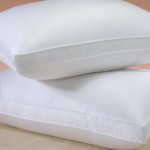The camel is large and strong enough to adapt to desert terrain. Therefore, the camel has become a means of transportation in the desert. The ancient Silk Road was built by camels. Camels themselves have many advantages. Camel milk can be used as a tonic, camel hair can be used to make leather goods. In tourist destinations, camels can also be used as means of transportation, pulling tourists to explore the natural scenery in the difficult-to-travel desert.

Like most herbivorous animals, camels that have been domesticated and raised by humans are gentle and rarely attack humans. With survival skills in the desert, people living in the desert can follow camels to find shelter from the wind and sand, and they can also find water sources. Camels do not pose a threat to humans and, like most animals, they will be frightened when they see humans.
Generally, domesticated camels are not dangerous, but there are rare exceptions. Domesticated camels need to move according to the owner’s wishes, and farmers sometimes lure camels on roads in the desert area for convenient transportation. After all, human strength is incomparable to that of camels, and it is very uncomfortable to walk on sand dunes. However, this can affect traffic safety. In the grassland areas of Inner Mongolia, occasional accidents occur when cars collide with camels.
However, even when camels have adapted to the desert environment, camel carcasses can still be seen in the desert. Some people say that camel carcasses in the desert should not be touched. This statement is actually an exaggeration. Camel carcasses are not much different from other animal carcasses, and although the desert is sunny, animals that come into contact with the surface will still decompose due to microorganisms, leaving only bones and hair.

In the desert, there are carnivorous and scavenging animals that will chew on camel carcasses. Camel carcasses are considered dangerous in some special cases. Recently deceased camels have no external wounds or bite marks from scavengers. Camels are herbivorous animals.
The bacteria inside camels do not die quickly and begin to decompose the camel’s body from the inside. The decomposition of some microorganisms produces gas, and the camel’s throat is blocked due to secretions and decomposed tissue. This causes the camel’s belly to swell like a balloon.
The end result of a camel is that most of them start to decompose from the inside, eventually tearing the skin and causing air leakage. The danger of camel carcasses is only in the stage of bloated dead bodies. If you accidentally poke the camel with a sharp object, the camel’s skin can explode due to uneven pressure, and the stomach and intestines may burst out. This explosion will not kill anyone, but it mainly emits foul smell and gases like hydrogen sulfide released simultaneously from the decomposition process of microorganisms and there is a risk of poisoning. There is not much danger besides that.
A dead camel in the desert is not something that is impossible to touch, but it depends on the object and conditions. In general, a dead and rotten camel may not have a pleasant smell due to exposure to sunlight and dry air, and they will not contain parasites and human-killing bacteria that can be transmitted to humans. In an emergency, camel hair can still be used to resist the cold, and the uncompletely decomposed camel bone marrow can also be used as a lamp. Adult camels are similar to humans, with long yellow-colored bones, which are more combustible.
However, it is rare for anyone to touch a dead camel in the desert. The desert environment itself is harsh, and no one can go to the desert unless they are near some small islands, let alone encountering a dead camel in the desert. Camels quickly emit a foul smell when exposed to sunlight, and the smell of a dead animal is unbearable for humans. The real danger is when you see a dead camel, you may already be in the desert, short of water and shade, and there is a large temperature difference between day and night.
In the end, the real danger is not the camels but the environment where they live. Humans do not have the endurance, tolerance to cold and heat, and the ability to find water in the desert like camels.
8 Common Mistakes People Make with Cutting Boards
Are you using your cutting board correctly? Many Vietnamese households rely on cutting boards in their kitchen, but not everyone knows how to use them properly, especially when it comes to wooden cutting boards. Check out these 8 mistakes to avoid when using a cutting board to ensure both hygiene and safety for everyone in your family.






































